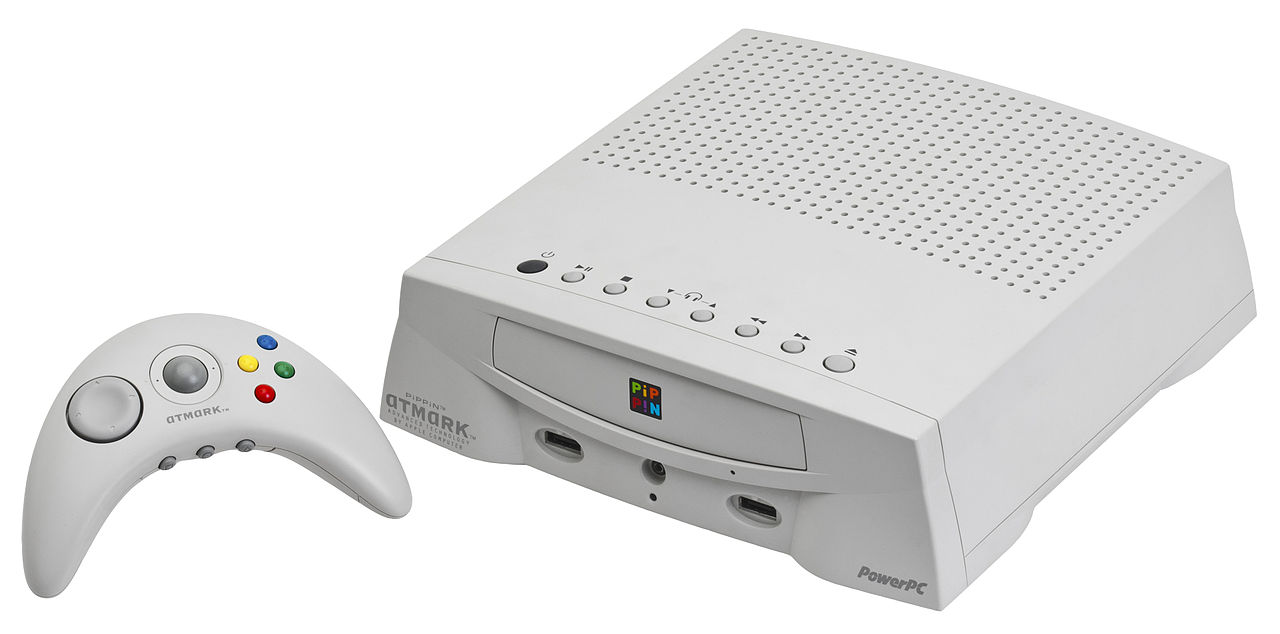With the Wii U’s release this weekend, I thought it would be fun to look at Apple’s foray in to the gaming console market. Long before the iPod touch was the “funnest iPod ever,” Apple tested the waters with the PiPP!N project.
(For sanity’s sake, I’ll be using the far-easier-to-read “Pippin” nomenclature.)
History
In 1994, Bandai, a Japanese game maker approached Apple about partnering on a scaled-down Mac for CD-ROM based gaming. The company asked for a stripped-down Classic II, with the ability to play Macromedia Director-based games. Bandai suggested that Apple build the internals, and that they would handle the casing, controls and packaging.
Bandai’s previous game console, the Playdia was on the market already, but failing. The company looked to Apple to supply its hardware expertise to make something more powerful and ultimately more fun.
Less than a year after the initial meeting, a prototype was shown off in Monterey, California to some thirty or so companies writing CD-ROM games at the time. The 68K-based machine was somewhat underwhelming, as as Apple was already working on the PowerPC project at the time, the two companies changed gears and re-worked the machine. (Unsurprisingly, moving to the newer silicon to power the console cut profits severely.)
When it was released in 1995, the Apple Bandai Pippin was up against stiff competition in the forms of the Sega Saturn and Sony PlayStation. At $599, less than 45,000 were sold, with production being halted in 1997 when Steve Jobs returned to Apple. Roughly 100,000 units were built, but Bandai continued to support until December 31, 2002.
Hardware
Here were the box’s specs, according to Apple’s support document:
- 66MHz PowerPC 603 RISC Microprocessor
- Superscalar, 3 instructions per clock cycle
- 8 kByte data and 8 kByte instruction caches
- IEEE standard Single & Double Precision Floating Point Unit
- 6 MB combined System & Video Memory, advanced architecture
- 4X CDROM drive
- 64 kbyte SRAM Store/Restore Backup
- Aftermarket easy memory expansion cards 2, 4 and 8 MB increments
Video-wise, the machine included:
- 8 bit and 16 bit video support
- Dual Frame Buffers for superior frame to frame animation
- Support for NTSC & PAL composite, S-Video and VGA (640×480) monitors
- Up to 16.7M colors
Apple boasted that the Pippin was GeoPort ready.
Ladies…
The Pippin’s controller featured a trackball, 4-way pad and a collection of buttons:
In addition to the wired controller, Apple built a wireless version that used IR to communicate to the console, as well as these accessories:
- Pippin keyboard with drawing tablet
- Pippin Modems (14.4, 28.8, 33.6 kbit/s)
- Pippin memory (2, 4, 8, 16 MB)
- Pippin Floppy Dock
- Pippin MO 256 MB optical disk
Apple also built adaptors to connect the Pippin to a Macintosh via ADB.
Software
The base of the “PippinOS” was stripped-down version of System 7.5.2. As the machine was not a Macintosh, Apple developers had to modify the software fairly heavily. Here’s a bit from the Pippin’s Wikipedia page:
On a typical PowerPC-based Macintosh system, the boot process includes loading a bootstrap loader from ROM, loading the Process Manager stored in the boot blocks of the startup device, locating a “blessed” System Folder on the startup device, and then loading Finder. However, because the Pippin platform ran only on non-writable CD-ROM, a modification to the boot process had to be made. For developers who were using standard 7.5.2 system software, a “PippinFinder” was installed into the System Folder, allowing the CD-ROM to be bootable on a Pippin-based system. Once development was finalized, PippinFinder was removed from the System Folder, and the Pippin-specific system software was placed onto the build. In addition, an alias of the main executable was placed into the Startup Items folder, so that upon bootup, the application will launch automatically.
Good times, right?
The news on the non-OS software front wasn’t much better.
The vast majority of titles were built by Bandai. Less than 80 titles were released, with just 18 available at launch in the US. You can download some examples even today.
To build a game, developers had to “Pippinize” their CD-ROM discs, a process that included using a test Pippin system, the Mac software “Toast Pro” and a Power Macintosh.
RSA’s public/private key system was used to sign the CDs, and non-signed discs would not boot the Pippin. That said, Macs and PCs could read the contents of a Pippinized CD-ROM without issue.
Wrap-up
The Pippin is maybe the finest example of the bonkers projects Apple was trying the mid 1990s. Instead of focusing on its core product, Apple let the Macintosh grow stale and bloated while putting untold hours and money behind things like the Pippin and other dead-end technology.
Today, of course, Apple is a very different company. While it’s hard to tell if Apple knew how successful gaming on iOS would become, it has worked to take advantage of it.

